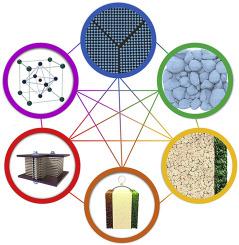Current Opinion in Green and Sustainable Chemistry ( IF 9.3 ) Pub Date : 2021-08-20 , DOI: 10.1016/j.cogsc.2021.100549 Dmitry A. Medvedev 1, 2

|
Complex oxides exhibiting predominantly protonic transportation represent a promising electrolyte material for electrochemical devices that satisfy clean, sustainable, and safe energy technologies (electricity generation, hydrogen production, energy storage, and carbon dioxide utilization). Although impressive laboratory-scale results have been achieved for small-scale protonic ceramic devices (cells), they have yet to be manufactured on a commercial scale owing to a number of outstanding issues related both to nanolevels- and macrolevels. In the present review, these issues are discussed along with their possible solutions and opportunities for future technological breakthroughs. It is clear that emerging synergies between fundamental science and applied technologies will facilitate rapid progress in the development of protonic ceramic electrochemical cells.
中文翻译:

质子传导陶瓷材料的当前缺点:如何克服它们以实现真正的电化学目的
以质子传输为主的复合氧化物代表了一种用于满足清洁、可持续和安全能源技术(发电、制氢、能源储存和二氧化碳利用)的电化学装置的有前途的电解质材料。尽管小规模质子陶瓷器件(电池)已经取得了令人印象深刻的实验室规模结果,但由于与纳米级和宏观级相关的许多突出问题,它们尚未以商业规模制造。在本综述中,讨论了这些问题及其可能的解决方案和未来技术突破的机会。


























 京公网安备 11010802027423号
京公网安备 11010802027423号